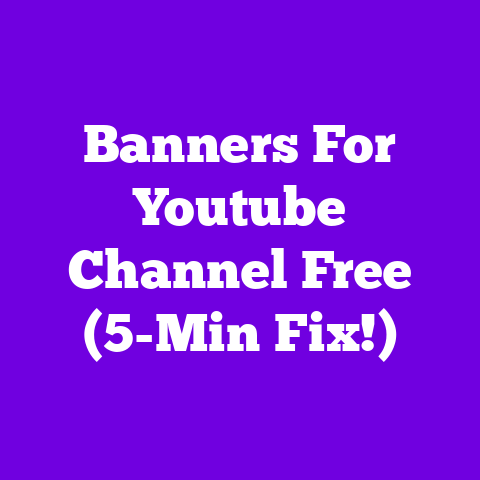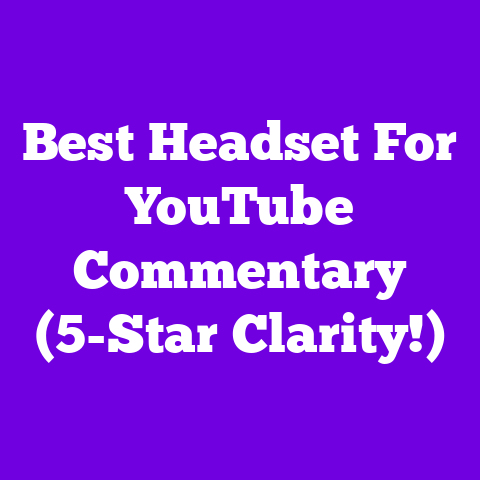Transformative Youtube Content Differs From Mere Copying
Creating original and transformative content is key for succeeding on YouTube and avoiding copyright issues.
With over 2 billion monthly logged-in users, YouTube has become one of the main places people consume video content online.
However, with this large audience comes challenges around standing out with unique content while also avoiding allegations of copyright infringement.
What Makes Content Transformative?
Transformative content means taking an original work and adding significant new meaning, expression or message to it.
This transforms the original content into an entirely new creative work.
On the other hand, merely copying substantial portions of a copyrighted work without adding new expression or meaning is not transformative.
This would just be copyright infringement.
So what are some key factors that determine whether content is sufficiently transformative?
Adding New Meaning and Expression
Courts evaluate whether the new work has a different character and expression from the original due to the way it alters the first work.Ask yourself:
- Does your video comment on, criticize or parody the original?
Transformative content offers new insights or understands that differ from the first work. - Does it serve a different purpose and have a different editorial voice?
Education, archival, or social commentary are some examples of transformative purposes.
Merely reposting a work or using it in the background of your own video typically does not qualify as adding new expression.
Level of Copying From Original Work
Borrowing more substantive portions of a copyrighted work leaves less room for a finding of fair use and makes it harder to argue your video is transformative.Ask yourself:
- Is the heart or essence of the original work copied or just smaller portions?
- Could you achieve a similar commentary or purpose without copying as much?
- Is the original work still accessible in its full form after your use?
Total reproductions are rarely fair.
Commercial Use Versus Nonprofit
Using copyrighted content for commercial gain often weighs against fair use while nonprofit purposes like education and commentary tilt favorably.
However, commercial usage does not rule out an overall finding of transformation if the other factors are met.
Many monetized YouTube videos add new meaning through commentary and critique.
Leveraging Fair Use Properly
Fair use is a legal doctrine that provides an exception to copyright law, allowing for certain unauthorized uses of copyrighted works.
To qualify, the use must be sufficiently transformative and meet these factors:
- Purpose and character of use: As noted above, nonprofit commentary/criticism versus commercial usage.
- Nature of work: More protection for creative works of entertainment versus factual works.
- Amount used: Borrowing smaller portions favors fair use.
- Effect on market: Does it unfairly compete with or undermine the original work?
Fair use protects creators from allegations of copyright infringement if the balance of these factors favors transformative fair use rather than mere copying.
YouTube’s algorithms also favor original content, so relying too heavily on unlicensed third party material can negatively impact channel performance.
Avoid seeing your own creations flagged by understanding transformative content best practices.
Key Factors in Transformation
With this background on fair use and transformative content, let’s explore some of the key specific factors YouTube evaluates in its copyright review process when determining if video includes “something more” than mere copying:
1. Commentary and Criticism
One of the clearest examples of transformation is offering commentary or criticism related to the copyrighted content being used.Ask yourself:
- Am I critiquing, analyzing or offering commentary on specific elements related to the original work?
- Does the inclusion of this material serve a commentary purpose or is it used merely for entertainment value or aesthetic appeal?
- Would my critique and commentary still come through without directly featuring segments of the original?
Genuine commentary diffuses arguments that you have simply reposted or mirrored content without adding something new.
2. New Artistic Expression and Meaning
Beyond commentary, you can create new art and meaning by significantly altering the original content or context.Examples include:
- Parody: Humorously mocking or exaggerating the original work.
- Satire: Using the original in an ironic or sarcastic way to highlight flaws.
- Mashups: Combining two or more works to make something new.
- Remix: Adding substantial creative alterations and interpretations.
- Appropriation Art: Recontextualizing an existing work within a new frame and purpose.
Merely changing the medium (e.g.
TikTok remixes) is unlikely to qualify as adding new expression on its own without more substantive transformation.
3. Educational Value and Context
Leveraging copyrighted materials for educational purposes and contexts may lend support to a fair use defense, especially if you:
- Use only the amount needed for commentary goals.
- Add lesson plans, teaching commentary or academic framing.
- Have a different overall purpose than the original work.
However, just because content has educational themes does not automatically make it fair use.
The above transformative factors still come into play.
4. Creativity in Repurposing Content
YouTube also looks for new creativity in how existing content is repurposed:
- Comedic timing, music choices and editing significantly alter mood and tone.
- Narration, text overlays and visuals expand on the underlying work.
- Mashups, montages and compilations weave together works to make wholly new perspectives.
Merely repeating a work or playing it in the background likely does not qualify.
Look to add your own style and creative perspective instead.
5. Original Content Alongside Any Borrowing
The amount of original content and creation alongside any use of third party materials is also important:
- A cover song transforming the lyrics and arrangement but keeping the basic melody.
- A video essay featuring commentary, narration, editing and critiques layered over brief illustrative clips borrowed.
The more of your own new authorship and creativity supplemented in, the stronger your fair use case will be.
Short de minimis uses also face fewer challenges.
6. Market Impact and Licensing Options
How the use impacts the market for the original is also key.
Uses that directly compete with or undermine the copyright owner’s market tilt against fair use.
For example, directly uploading a full movie to YouTube for entertainment viewing purposes would unfairly harm the studio and licensing opportunities.
However, more indirect market impacts arising from commentary and parody tend to be acceptable free speech, even if the copyright owner objects to your critique.
Proactive Tips for Creators
By focusing on adding transformative commentary and creativity, YouTube creators can feel more confident they are producing original content and avoiding mere copying.
Here are some proactive tips:
Vet Content Carefully
Carefully review any copyrighted materials you plan to feature before publishing. Ask yourself:
- Does this material clearly serve my commentary purpose?
- Have I added enough of my own new authorship to make it transformative?
Continuously reassessing your use as you edit will prevent issues.
Alter Content Significantly
Consider audio and visual alterations to further transform content, such as:
- Cropping and zooming into key sections to isolate commentary focus.
- Lowering audio volume during borrowed segments to keep commentary voice foremost.
- Adding graphics, text commentary and effects as creative overlays.
- Pitching audio up/down subtly or distorting it.
Commentary Should Stand on Its Own
Your own critique and insights added around the copyrighted content used should drive the viewer experience:
- Segments featured should clearly illustrate the main points being made in your commentary.
- Viewers tuning in and out briefly should still walk away understanding your messages and themes without needing to see all borrowed materials directly.
This helps demonstrate transformative purpose and minimizes concerns over reliance on featured clips.
Seek Licenses When Needed
If you are using a more substantive portion of a work and your commentary is thinner, consider proactively reaching out to the copyright holder to license the content use directly.
Many creators find affordable ways to license materials that help them continue monetizing their videos.
Dispute Flags Carefully
If you do receive a copyright claim on your video, thoughtfully assess whether your use meets the transformation standards above before disputing.
Overly reflexive disputes can cause channels problems.
If your case is strong, highlight the exact commentary purpose and creativity added in your dispute.
Common Copyright Questions (FAQ)
To wrap up, here are some frequent creator questions around copyright and transformation on YouTube:
Is commentary and critique always fair use?
No, commentary itself does not automatically make use of copyrighted content fair use.
You still need to assess the full context using the factors covered in this guide.
Borrowed content must clearly illustrate commentary points made, with enough new insights and authorship added by you to make it transformative.
Can I use short clips under fair use?
There are no set duration limits or safe harbors.
Even short clips can face challenges if they feature the most substantive or recognizable parts of a copyrighted work and lack strong commentary or creativity added.
The broader context matters more than clip length alone.
What if I credit the original work?
Credit alone does not authorize a use or make it transformative fair use.
The key factors are adding new expression through commentary, critique, humor, changes in tone/mood, editing, etc.
Proper attribution is good ethics, but transformative purpose is what counts legally.
Can I edit out logos or watermarks?
No, removing or obscuring copyright management information like logos, attributions or watermarks violates the DMCA provisions against counterfeiting.
Never digitally alter a copyrighted work to hide its source.
I hope this guide gives YouTube creators a strong starting foundation on what constitutes transformative content and best practices to incorporate when featuring third party materials.
Please reach out with any other questions!





